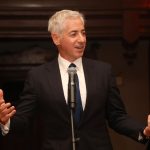To combat vaccine hesitancy and address the ongoing pandemic, the government is adopting a new approach. Instead of referring to the COVID-19 shot as a booster, they're now calling it an "updated" vaccine, drawing a parallel with the annual flu vaccine, which evolves to combat new flu variants. This shift in terminology reflects the understanding that the virus has entered an endemic phase, similar to the flu.
REPORT: The Biden admin will be telling Americans to get yet another covid-19 booster shot in the coming weeks, despite past vaccines and boosters not protecting people from the virus.
How many times are people going to fall for this?
A White House official said: "We will be… pic.twitter.com/CuRYDiIO2W
— Collin Rugg (@CollinRugg) August 21, 2023
Mandy Cohen, Director of the Centers for Disease Control and Prevention, is describing the COVID-19 shot as a regular fall immunization, akin to the flu vaccine and RSV shots. The goal is to normalize receiving the updated vaccine without creating undue concern about the number of shots needed.
Even President Biden chose to quietly receive both the flu shot and the COVID-19 shot this year, rather than a public display. This change aligns with Mr. Biden's declaration that the pandemic is waning and may also be influenced by the upcoming 2024 campaign. The administration seeks to strike a balance between preventing potential flare-ups and not continually reminding people of the COVID-19 threat.
However, this shift in messaging and a transition away from an emergency stance could potentially lead to fewer people getting the shots. While more than 80% of Americans have received at least one COVID-19 shot, and 70% are fully vaccinated, approximately only half the population typically gets a flu shot in a given year. Recent polls also indicate that half of Americans are uninterested in additional shots.
Vaccine hesitancy is driven by several factors, including concerns about adverse reactions and vaccine efficacy. The initial promise of preventing the disease and eliminating the need for boosters has proven inaccurate. Scientists now clarify that the shot mainly reduces disease severity and suggests that annual shots may be necessary.
Moreover, skepticism regarding the government's COVID-19 crisis management has contributed to vaccine hesitancy, especially among politically conservative individuals. Heavy-handed tactics, mandates, and shifting mask guidance have eroded trust in public health institutions. Despite the gentler approach this year, some experts feel that the CDC made a misstep by recommending the updated shot for everyone. They propose a more targeted approach based on individual vulnerability for building trust.
Supply issues further complicate this year's vaccination campaign, with some areas reporting insufficient COVID-19 shots. While pharmacies have generally obtained flu vaccines, primary-care locations struggle to access COVID-19 vaccines. Efforts are underway to address supply challenges and ensure the necessary shots are available to meet community needs.
In conclusion, the government aims to encourage individuals to receive the "updated" COVID-19 vaccine through the nomenclature change, a less forceful approach, and supply issue resolutions. Time will tell if these strategies effectively boost vaccination rates and help manage the virus's impact.




